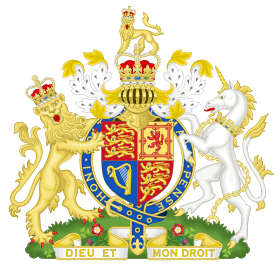Schweppes
Schweppes (/ʃwɛps/[1][2][3] or /ˈʃvɛpəs/, German pronunciation: [ˈʃvɛpəs]) is a beverage brand that originated in the Republic of Geneva and that is sold around the world. It includes a variety of lemonade, carbonated waters and ginger ales.
| Type | Carbonated mineral water |
|---|---|
| Distributor | Keurig Dr Pepper PepsiCo (North America, Japan, Philippines and Australia) The Coca-Cola Company (Europe, China, India, Lebanon, Malaysia, New Zealand, South America, South Africa and Egypt) |
| Country of origin | Geneva, Republic of Geneva |
| Introduced | 1783 |
| Website | www |
History
_SCHWEPPES_MINERAL-WATERS.jpg)
In the late eighteenth century, Johann Jacob Schweppe developed a process to manufacture carbonated mineral water based on the discoveries of Joseph Priestley. Schweppe founded the Schweppes Company in Geneva in 1783 to sell carbonated water.[4] In 1792, he moved to London to develop the business there. In 1843, Schweppes commercialised Malvern Water at the Holywell Spring in the Malvern Hills, which was to become a favourite of the British Royal Family until parent company Coca-Cola closed the historic plant in 2010 to local outcry.[5]
In 1969, the Schweppes Company merged with Cadbury to become Cadbury Schweppes. After acquiring many other brands in the ensuing years, the company was split in 2008, with its US beverage unit becoming Keurig Dr Pepper and separated from its global confectionery business (now part of Mondelez International).[6] Keurig Dr Pepper is the current owner of the Schweppes trademark.
The Japanese Asahi Group bought Schweppes Australia in 2008 from Cadbury.[7]
Mainstay Schweppes products include ginger ale (1870),[8] bitter lemon (1957),[9] and tonic water (the first carbonated tonic – 1871).[10]
Marketing
During the 1920s and 1930s, the artist William Barribal created a range of posters for Schweppes.[11] In 1945, the advertising agency S.T.Garland Advertising Service Ltd., London coined the word 'Schweppervescence' which was first used the following year. Thereafter it was used extensively in advertisements produced by Garlands who sold copyright of this word to the Schweppes Company for £150 five years later when they relinquished the account.
An ad campaign in the 1950s and 1960s featured a real-life veteran British naval officer named Commander Whitehead, who described the product's bubbly flavour (effervescence) as evanescence.[12] Comedian Benny Hill also appeared in a series of Schweppes TV commercials in the 1960s.
Another campaign, voiced by British actor William Franklyn, made use of onomatopoeia in their commercials: "Schhh… You know who." after the sound of the gas escaping as one opens the bottle.[13][14]
References
- "Schweppes Ginger Beer advertisement". The New Yorker: 115. 25 March 1950.
(rhymes with peps)
- Wells, J. C. (2008). Longman Pronunciation Dictionary, 3rd edn, Harlow, UK: Longman
- Daniel Jones, Peter Roach, et al. (2011). Cambridge Pronouncing Dictionary, 18th edn, Cambridge, UK: Cambridge University Press
- Morgenthaler, Jeffrey (2014). Bar Book: Elements of Cocktail Technique. Chronicle Books. p. 54.
- "Coca-Cola pulls plug on Malvern, the Queen's favourite mineral water". Retrieved 17 May 2017.
- "Cadbury plc Demerger" (Press release). Cadbury plc. 7 May 2008. Retrieved 29 December 2009.
- "Schweppes sold for $1.2bn". Retrieved 15 August 2020.
- "Ginger Ale | Schweppes". Retrieved 28 February 2018.
- "Schweppes Bitter Lemon". Retrieved 9 November 2010.
- "Premium Mixers | Schweppes".
- Simmons, Douglas A. (1983). Schweppes® The First 200 Years. London: Springwood Books. ISBN 0-86254-104-2.
- "Advertising Mascots > Commander Whitehead (Schweppes Tonic Water)". Tv Acres. Retrieved 10 July 2010.
- "Schweppes Tonic Water TV Advert by O & M". Youtube. Retrieved 7 March 2013.
- "Schweppes- Für die Macher von heuter". Youtube. Retrieved 2 September 2015.
External links
| Wikimedia Commons has media related to Schweppes. |
- Official website
- Schweppes History Movie - 13 minute video on the history of Schweppes

.svg.png)

